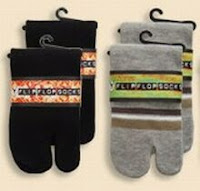
There seems to be this ongoing argument about tanning: sun-bathing, tanning salons, etc. So I decided to do my own research, as I myself love to go to the salon tanning beds, and here's what I found...
Some of us know we get a vitamin from the sun: vitamin D.
An author of an article on Helium.com says, "Vitamin D is an essential vitamin which is required for normal growth and development of bones and teeth. Deficiency of vitamin D can be associated with painful bones and joints. Deficiency of vitamin D also leads to weak bones which can easily get fractured." In regards to actual tanning, the writer goes on to say, "A lot of heat is also generated during the procedure, which helps in providing relief against body ache, painful joints etc. Research has shown that process of tanning causes release of substances called endorphins which are responsible for producing a feeling of well being" (2007).
Another author on Helium.com, Amy Bass, says, "When deciding if Tanning Beds are a healthy
 source of UV rays, one must understand the difference between UVA and UVB rays.
source of UV rays, one must understand the difference between UVA and UVB rays.UVA rays reach deeper into the skin and cause it to tan, while UVB rays work more on the surface and cause it to burn. Tanning beds usually give off 93%-99% UVA (tanning) rays, while having very little of the UVB (burning) rays coming down on your skin.
This means you can get a better tan with less time and with less chance of burning than you would from the actual sun. Tanning bed experts claim that tanning beds are actually safer than the sun itself. This is because tanning beds can be controlled to give the most beneficial rays while limiting the bad ones" (2007).
Getting some UV rays on a regular basis is very important to our health.
 According to Michael Stepp, a widely-published UV light researcher who is also CEO of Wolff System Technology said, "Instead of tanning just for cosmetic reasons, an increasing number of regular tanning bed users have learned that regular, responsible and moderate exposure to UV light from natural or artificial sources, is important to well-being, natural vitamin D production and disease prevention" (year unknown).
According to Michael Stepp, a widely-published UV light researcher who is also CEO of Wolff System Technology said, "Instead of tanning just for cosmetic reasons, an increasing number of regular tanning bed users have learned that regular, responsible and moderate exposure to UV light from natural or artificial sources, is important to well-being, natural vitamin D production and disease prevention" (year unknown).Statistics done by Danish scientist, Thorwald Madsen, show that disease, particularly infectious disease, occurs most frequently during the seasons in which the people get the least amount of sunshine. He concluded: "The prevalence of disease corresponds to the amount and intensity of the sunshine. The more sunshine, the greater the resistance to disease; the less sunshine, the lower resistance to disease" (year unknown).
Tanning can also help treat skin conditions like eczema or psoriasis, so long as it's not extended exposure which may cause dryness or further irritation. Everything in moderation, dearies.

All in all, the real sunlight is probably the best source to receive the healing rays from the sun, but for people who do not have the time or ability to sunbathe, tanning beds are a great option. Some people are afraid of these coffin-looking beds, but I assure you as someone who's been there, it is one fear worth getting over. The warm air gives off a similar relaxing response to a sauna and I can just feel my stress melt away. You have complete control of how far the lid closes, how long you stay in there, and you're guarnteed total privacy. And no, you don't have to go nude if you don't want to. I myself prefer to leave my bikini bottom on.
Now just remember, I've only mentioned some of the benefits of sun exposure and tanning.
As your authoress, I feel obligated to you to tell you the whole truth.
There are risks as well and before you decide this is the route for you,
do your homework!
And my advice to you is...
- always wear protective eyewear
- use tanning lotion for added hydration and to get better results
- exfoliate before exposure or use tanning lotion that does this for you
- moisturize with regular lotion/moisturizer (especially before bed as your skin is more susceptible to moisture at night)
- DRINK H2O!
works cited
Pipp, Bill. (2007). Ets Tan. Online business site. http://www.etstan.com/healthbenefits.htm
Bass, Amy and Va, R. (2007). Style & Beauty. Tanning and Sunscreen: "Tanning Salons: The Benefits and Risks." Informational website. Non-professional articles. http://www.helium.com/channels/344-Tanning-Sunscreen/knowledge/9986-tanning-salons-benefits-risks
http://www.medicalnewstoday.com/medicalnews.php?newsid=7578
http://www.vanderbilt.edu/AnS/psychology/health_psychology/Tanning.html

